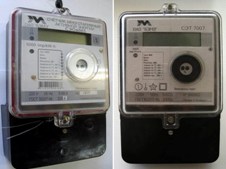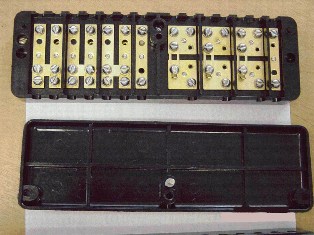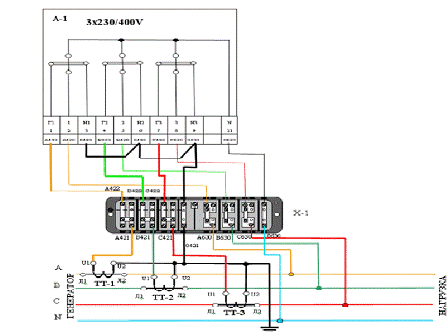Categories: Sharing experience, Electrician Secrets
Number of views: 69582
Comments on the article: 6
How to replace an electric meter without disconnecting electricity consumers
 Electric meters are subject to periodic verification. According to the "Rules for the Use of Electric and Thermal Energy", the inter-calibration interval should be no more than four years for devices used in the ASKUE system (we will discuss this system later) and at least eight years for local electricity meters. Therefore, according to these standards, electricity meters must be periodically dismantled and attorneys installed instead.
Electric meters are subject to periodic verification. According to the "Rules for the Use of Electric and Thermal Energy", the inter-calibration interval should be no more than four years for devices used in the ASKUE system (we will discuss this system later) and at least eight years for local electricity meters. Therefore, according to these standards, electricity meters must be periodically dismantled and attorneys installed instead.
It would seem that there is nothing complicated about this. But imagine that you need to replace the electric meter on a feeder, the disconnection of which is problematic for several reasons. For example, due to the continuity of the process.
Is it possible to make sure that a replacement is made without disconnecting consumers and at the same time in strict accordance with the Safety Rules?
The answer is definitely possible! For this, an element such as terminal test boxes is introduced into the electricity metering circuit.
The terminal test box is a base with a cover made of non-combustible insulating material (for example, carbolite) on which bolt clamps and contact pads are placed. The appearance of such a box is shown in the figure:

We will deal in more detail with the internal structure of the terminal test box. It has voltage clamps and current clamps. That is, the test box is included in the breaking of these circuits.
When replacing the electric meter, we must fulfill two requirements - firstly, short-circuit the secondary windings of current transformers, and secondly, to remove voltage from the meter for safe operation. The first task is solved by screwing a special plug into the corresponding current clamps (see figure).
The locking plug is a regular screw with an insulated handle (holder) for convenient and safe screwing. Using screwdrivers with insulated handles, push the contact plates 35-36-37 up.
After completing these steps, we closed the current circuit of electricity metering not through the current coil of the meter, but through the plug and the common plate - that is, the current circuit is completely separated from the meter.
After that, using two screwdrivers with insulated handles, turn off each phase (contact plates 32-33-34). That's it - you can safely dismantle the electric meter and install a new one. After installing the attorney electric meter, we perform these steps in the reverse order - and here we have replaced the electric meter without removing the voltage.
The wiring diagram for enabling electricity metering using a terminal test box is shown in the figure.

As well as electric meters and current transformers, terminal test boxes must be sealed with an energy supplying organization.
Mikhail Tikhonchuk
See also at bgv.electricianexp.com
:
